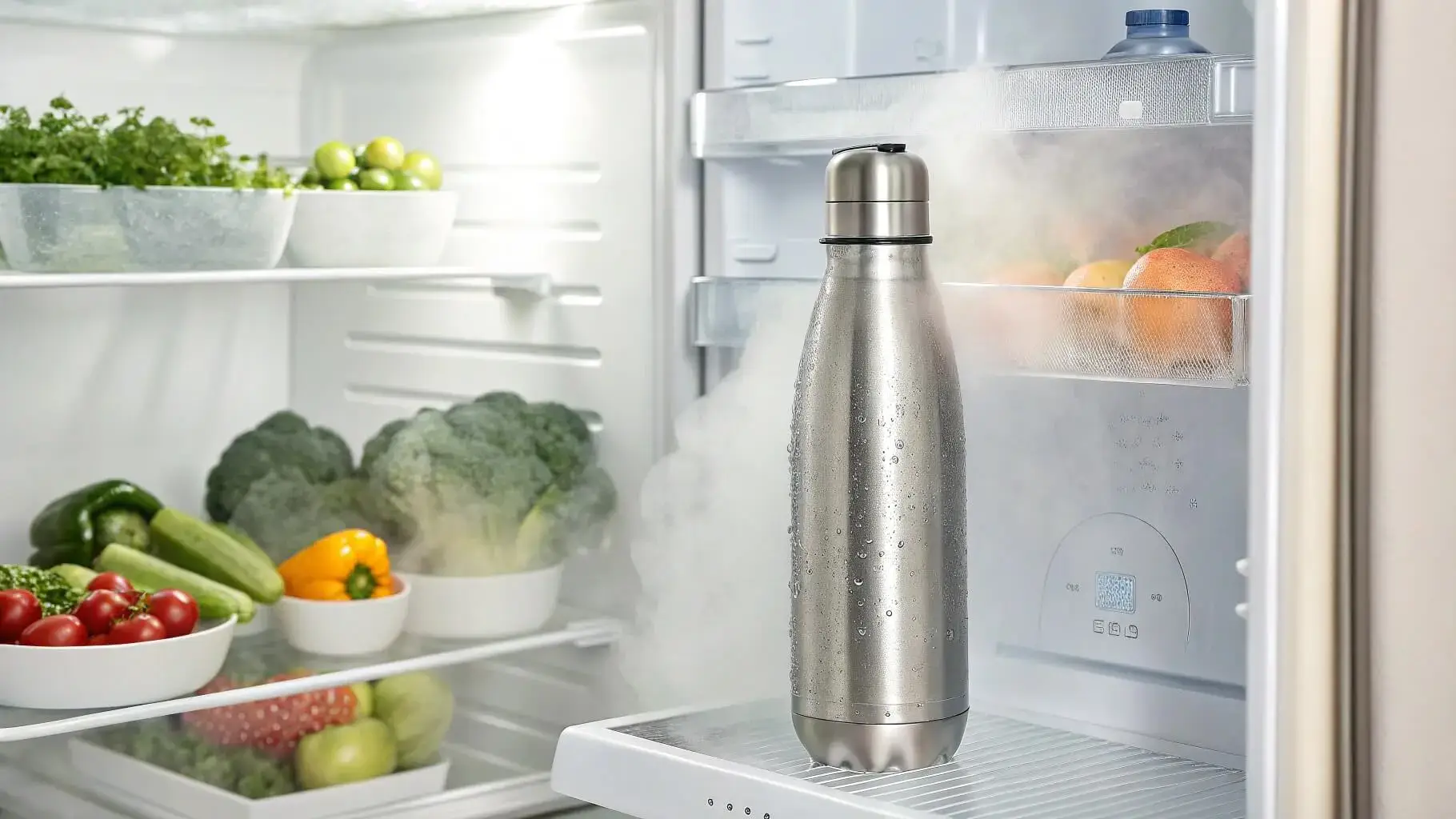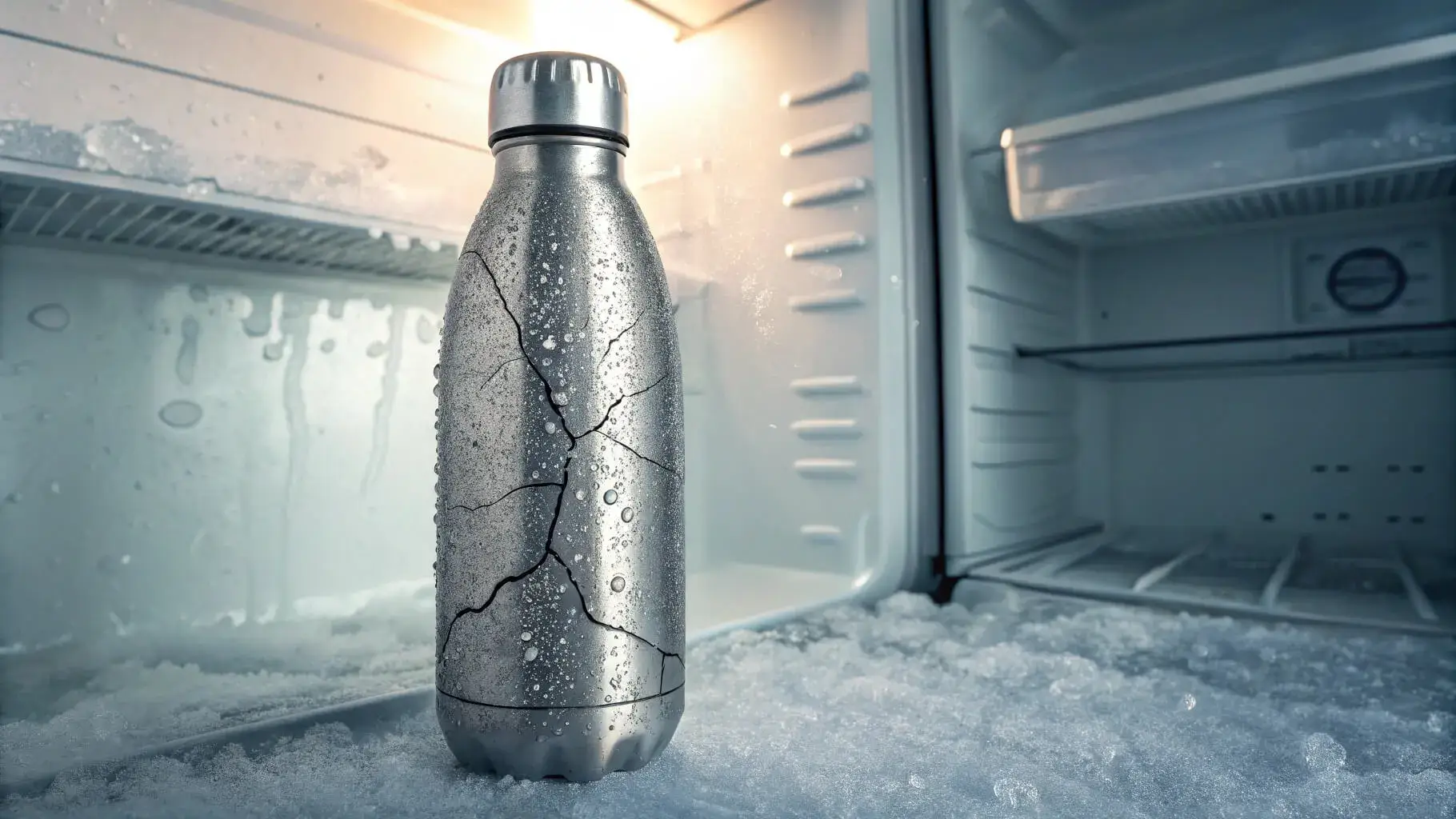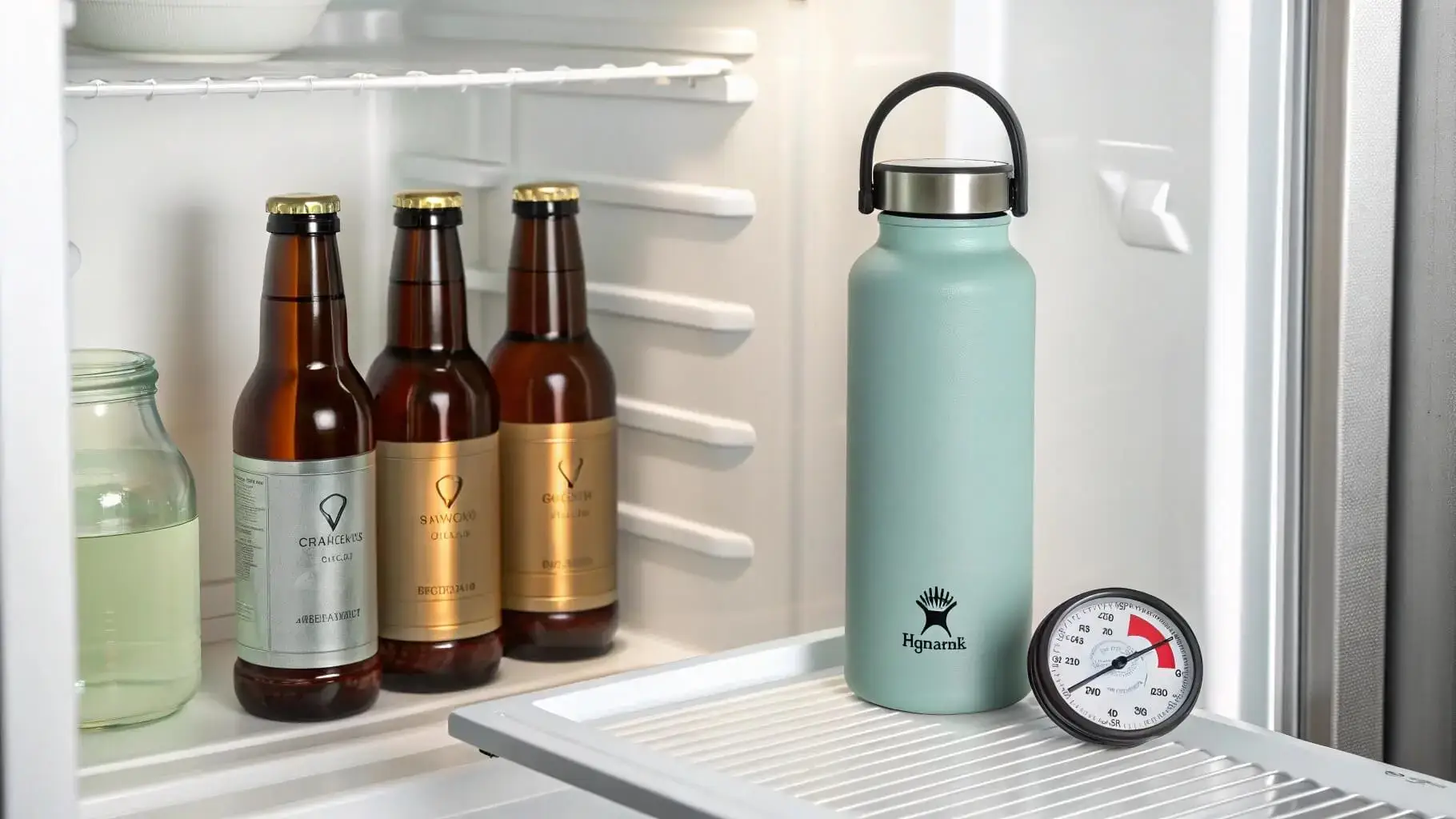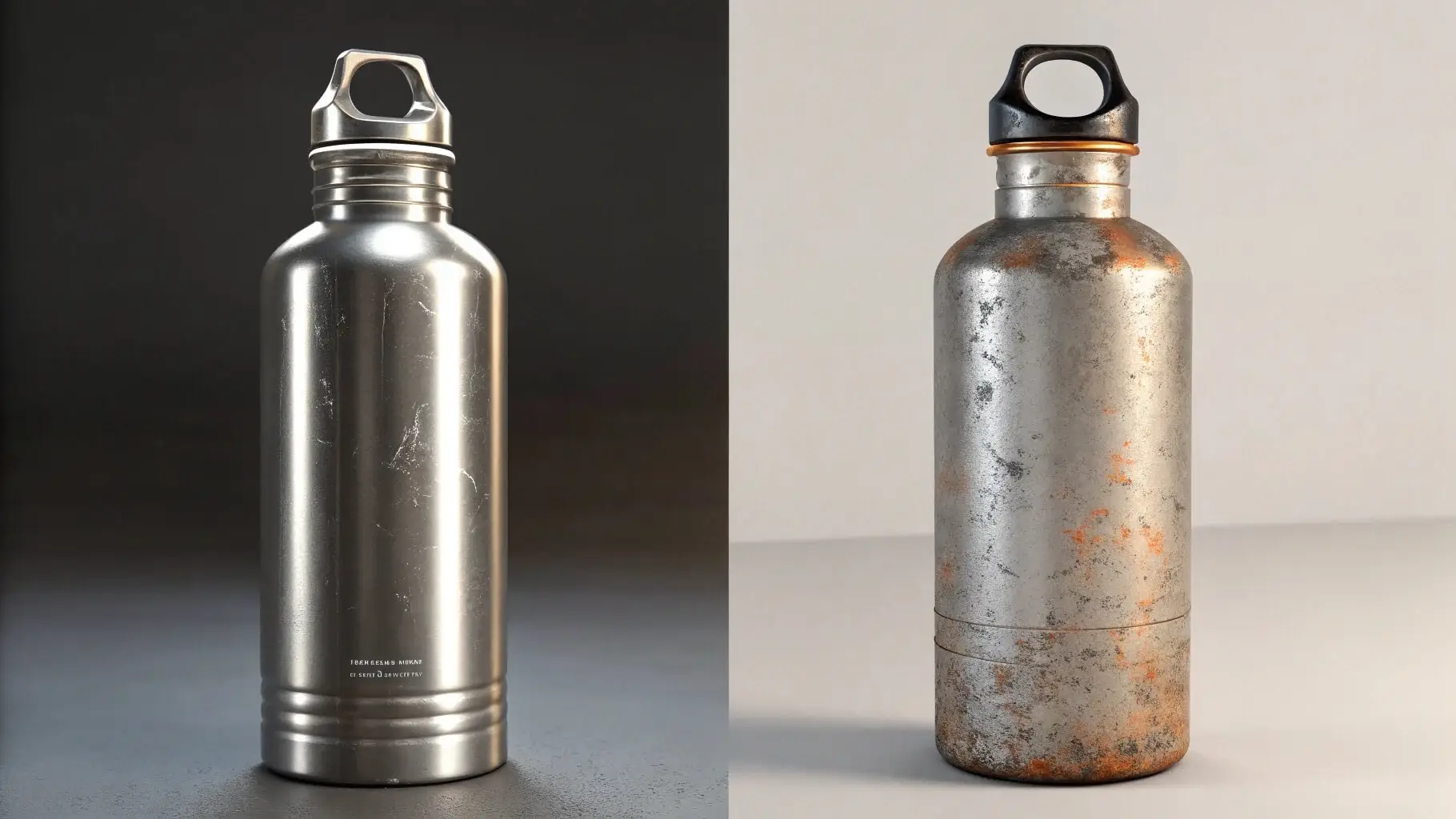
You might wonder if refrigerating stainless steel water bottles1 is safe. Let’s address your concerns step-by-step.
Yes, stainless steel water bottles can safely go in the fridge, but there are limitations to be aware of.
Understand the do’s and don’ts for using stainless steel bottles in cold environments.
Can You Put Stainless Steel in the Fridge?
Refrigerating stainless steel bottles is safe and practical for most situations.
Stainless steel bottles are fridge-safe and effective at keeping drinks cool for extended periods.
Stainless steel’s durable and non-reactive nature makes it ideal for refrigeration. However, here are a few considerations:
Tips for Refrigerating Stainless Steel Bottles
- Ensure the bottle has no damage or dents that could compromise its structure.
- Remove any lids that might create a vacuum seal, as this can make the bottle difficult to open.
- Pre-chill the bottle before filling it for maximum effectiveness.
Stainless steel bottles are versatile, making them a reliable option for both refrigeration and day-to-day use.
What Happens if You Put a Stainless Steel Water Bottle in the Freezer?
Freezing stainless steel bottles can lead to issues due to expansion.
Avoid putting a stainless steel water bottle in the freezer, as liquids expand and may damage the bottle.

When water freezes, it expands, creating pressure inside the bottle. This can warp the metal, damage seals, or even cause the bottle to crack. Instead, consider refrigerating your bottle or using ice cubes.
Safer Alternatives to Freezing
- Fill the bottle partially and freeze without the lid to allow for expansion.
- Use ice cubes instead of freezing the entire bottle.
- Opt for insulated bottles that keep drinks cold without the need for freezing.
Freezing a stainless steel bottle is unnecessary with proper insulation and cooling techniques.
Is It Okay to Put Your Hydroflask2 in the Fridge?
Hydroflasks are designed to handle cold temperatures efficiently.
Yes, you can put your Hydroflask in the fridge, but it is often unnecessary due to its insulation.

Hydroflasks and similar vacuum-insulated bottles already excel at maintaining temperatures. Placing them in the fridge has minimal impact, as the insulation slows down cooling.
Reasons to Avoid Refrigerating Hydroflasks
- It takes longer for the contents to chill due to insulation.
- The exterior of the bottle does not get cold, making it less effective for instant cooling.
Instead of refrigerating, pre-chill the liquid separately before pouring it into your Hydroflask for optimal performance.
What Are the Disadvantages of a Stainless Steel Water Bottle?
While stainless steel bottles offer many benefits, they are not without drawbacks.
Stainless steel bottles are heavier and may dent easily compared to other materials.

Here are some potential disadvantages to consider:
Disadvantages of Stainless Steel Bottles
| Factor | Drawbacks |
|---|---|
| Weight | Heavier than plastic or glass |
| Cost | More expensive than plastic options |
| Dent Resistance | Susceptible to dents if dropped |
| Taste Retention | May retain flavors without proper cleaning |
Understanding these disadvantages helps in making informed purchasing decisions, particularly for specific use cases like travel or sports.
When Should You Throw Away Stainless Steel Water Bottles?
Knowing when to replace your stainless steel water bottle is important for health and safety.
You should throw away a stainless steel water bottle if it shows signs of damage or rust.

Pay attention to the following indicators:
Signs It’s Time to Replace Your Bottle
- Rust or Corrosion: Indicates compromised material integrity.
- Leaks: Damaged seals or warped structure can cause leakage.
- Lingering Odors: Persistent smells after thorough cleaning suggest material degradation.
- Dents: Large dents may affect insulation performance and structural stability.
Regular maintenance, such as thorough cleaning and avoiding harsh conditions, can extend the life of your stainless steel water bottle.
Conclusion
Stainless steel water bottles are durable and versatile, but proper care ensures they stay functional for years. Use them wisely for refrigeration, avoid freezing, and replace them when necessary.

